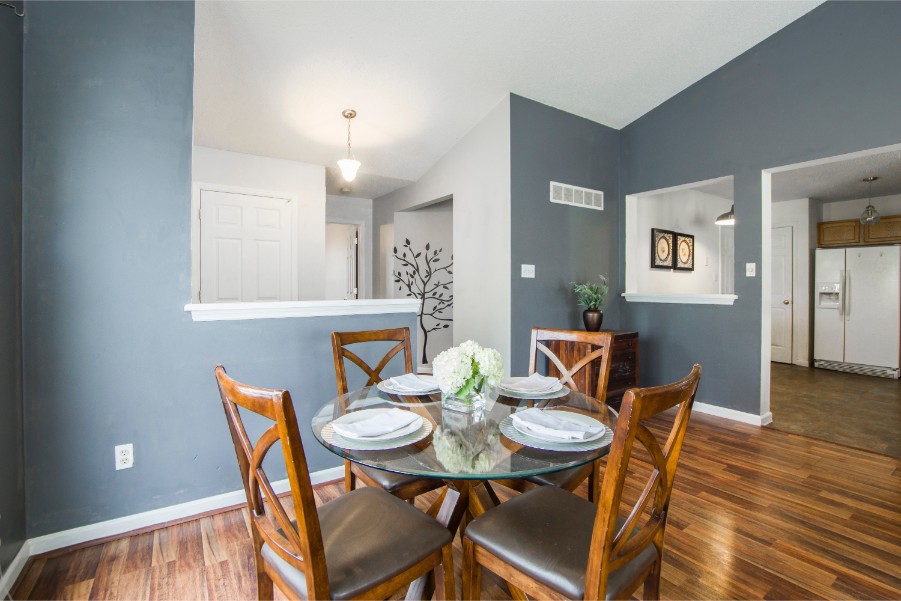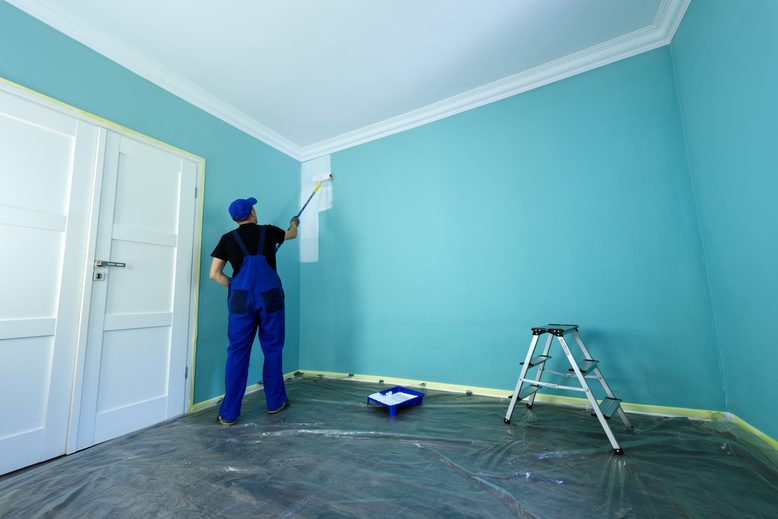Get the Best Cleveland Metro Painting Specialists for Flawless Interior Painting
Get the Best Cleveland Metro Painting Specialists for Flawless Interior Painting
Blog Article
Enhance Your Inside Design With Comprehensive Shade Assessment
The assimilation of color assessment right into interior decoration provides an one-of-a-kind possibility to improve and elevate the emotional and visual vibration of a room. By engaging with a seasoned shade specialist, you can navigate the complexities of color choice, making certain that your choices not only complement architectural functions yet additionally reverberate with individual design and psychological impact. This strategic collaboration can dramatically affect the total ambience of your environment, promoting a feeling of consistency and function. Understanding the nuances of this process is vital-- what crucial elements should be considered to achieve optimum outcomes?
Advantages of Shade Consultation

In addition, shade examination aids in optimizing all-natural light and maximizing spatial perception. Lighter shades can make a space show up more extensive, while darker tones produce an intimate setup. Cleveland Metro Painting Specialists. This critical application of shade can significantly influence the general atmosphere of any type of indoor area
In addition, professional specialists possess a detailed understanding of existing patterns and ageless classics, ensuring that the chosen shades will certainly continue to be attractive over time. This foresight can save customers from costly redesigns in the future. Color appointment encourages clients by supplying them with a clear vision and direction, fostering self-confidence in their style choices and ultimately leading to an extra successful and enjoyable interior design end result.
Comprehending Shade Psychology
The significance of shade psychology in interior decoration can not be overstated, as it explores the emotional and psychological results that different hues can stimulate in individuals. Colors can influence state of mind, behavior, and also efficiency, making them a vital factor to consider in any type of design job.
For instance, cozy shades such as red, orange, and yellow are commonly related to power and warmth. They can promote sensations of enjoyment and convenience, making them appropriate for social rooms like living kitchens or spaces. Conversely, great colors like blue, eco-friendly, and purple often tend to stimulate peace and harmony, making them perfect for rooms or meditation areas.
In addition, the use of neutral tones can produce a well balanced environment by enabling the bolder shades to stand out without overwhelming the detects. Recognizing these psychological effects makes it possible for developers to create areas that not only look cosmetically pleasing yet likewise promote emotional well-being.
Including color psychology right into indoor layout entails a thoughtful option of hues customized to the intended function of each space, eventually improving the total experience for its residents. This understanding is critical for attaining a functional and unified indoor setting.
The Shade Wheel Explained
Understanding the relationships between shades is crucial for effective interior decoration, and the shade wheel works as a beneficial device in this procedure. The color wheel, created by Isaac Newton in the 17th century, highlights the range of shades set up in a round style. It makes up key colors-- red, blue, and yellow-- that can not be created by blending other colors. Second shades, formed by integrating primaries, include environment-friendly, orange, and purple. Tertiary shades arise from mixing a primary and a secondary shade, bring about colors such as red-orange and blue-green.
The color wheel assists designers realize the partnerships between shades, including complementary, similar, and triadic systems. Corresponding colors, located opposite each various other on the wheel, create vivid contrasts that can invigorate a room. Analogous shades, located alongside one another, provide a unified and natural appearance. Triadic plans use 3 uniformly spaced shades, using balance and aesthetic interest.
Using the shade wheel in interior decoration not just enhances aesthetic allure however additionally evokes particular feelings and atmospheres, making it a link vital referral for color appointment. Understanding these connections inevitably empowers designers to produce areas that are both functional and visually fascinating.
Selecting the Right Combination
Often, picking the best combination is a crucial consider accomplishing an effective interior layout project. A well-chosen color pattern can merge a room, boost its attributes, and evoke desired emotions. To begin, consider the function of the space. Various rooms serve varied functions and require palettes that reflect their intended use; for example, tranquil shades such as soft blues or eco-friendlies work well in rooms, advertising leisure.
Light can substantially change how shades appear, so it is essential to analyze the space at different times of the day. An unified palette needs to match these functions, creating a natural look throughout the room.
When choosing shades, use the 60-30-10 rule, which recommends that 60% of the area should be a leading color, 30% a second shade, and 10% an accent shade. This proportion makes certain balance and aesthetic interest (Cleveland Metro Painting Specialists). Ultimately, sample shades on the wall surfaces prior to dedicating, as this permits you to see how the colors interact check this site out with each other and the overall atmosphere they produce in your interior decoration task.
Dealing With a Shade Professional

When dealing with a shade specialist, the procedure typically begins with an initial assessment. During this meeting, you'll discuss your vision, preferences, and the existing components in your space. The specialist will evaluate your needs and may advise details shade combinations that straighten review with your objectives.
After establishing a direction, the consultant will give examples and visual help to aid you imagine the suggested color pattern. This action is critical, as shades can appear in a different way under varying lighting problems.
Furthermore, a color consultant can lead you in picking complementary furnishings, artwork, and devices to balance with your selected scheme. By working together closely, you can attain a polished aesthetic that elevates your insides and produces a welcoming environment. Ultimately, the expertise of a shade specialist can significantly boost the general impact of your style project.
Verdict
In summary, comprehensive shade assessment works as an essential tool for boosting interior decoration. By leveraging professional expertise of color psychology and spatial dynamics, a customized color scheme can be established to stimulate specific feelings and create a harmonious atmosphere. This tactical technique not only fosters a natural style story however additionally alleviates the danger of expensive redesigns. Ultimately, involving with a shade specialist ensures a notified and cosmetically pleasing outcome, raising the total experience of the space.
By involving with a seasoned color specialist, you can navigate the complexities of color choice, making sure that your selections not only enhance architectural functions however likewise reverberate with individual design and emotional influence. It consists of key shades-- red, blue, and yellow-- that can not be developed by blending other colors.The color wheel assists designers comprehend the connections in between colors, including complementary, comparable, and triadic plans.When selecting colors, utilize the 60-30-10 rule, which suggests that 60% of the space ought to be a dominant color, 30% a secondary color, and 10% an accent shade. By leveraging specialist expertise of shade psychology and spatial dynamics, a tailored shade scheme can be established to evoke particular emotions and develop an unified atmosphere.
Report this page